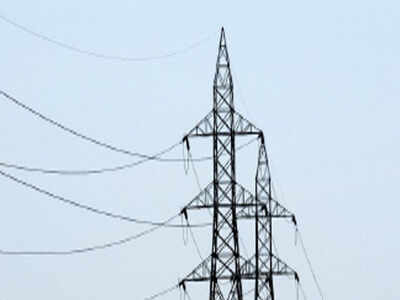
PATIALA: The Punjab State Electricity Regulatory Commission on Monday passed the tariff orders for the year 2020-21 with a slight relief for the low consumption domestic consumers (below 100 and 300 units a month), while increasing the state’s power subsidy bill and hiking the cost of power for high consumption domestic consumers by 10 paise per unit.
Those consuming less than a hundred units a month will be paying 50p a unit less from June 1, as compared to the tariff that was in force till Sunday. Similarly, those consuming between 100 to 300 units have been given a relief of 25p a unit. It will result in financial relief to the tune of Rs 354.82 crore to these consumers.
However, the cost of power for those consuming more than 300 units a month has been increased by 10p a unit.
In the new tariff order, the price of power being supplied to the general industry and the power intensive units (PIU) has also been increased ranging between 15 to 22 p based on total power load. The PSERC has, after many years, also increased the cost of power supplied to the Golden Temple and the Durgiana Temple by 5 p per unit.
The PSERC has also jacked up the cost of power supplied to the agricultural connections by 29 p per unit or Rs 22 per BHP per month, which is all set to increase the power subsidy bill of the state government. Other than these, the regulator has kept the tariffs of all other categories of the consumers more or less unchanged.
The commission has determined the annual revenue requirement (AAR) of PSPCL as Rs 31,100.62 crore against a demand for Rs 41,720.97 crore. It includes, ARR of Rs 1,345.28 crore determined for the Punjab State Transmission Corporation Limited (PSTCL) against a demand for Rs 1,500.24 crore and also the financial gap of previous years of the Punjab State Power Corporation Limited (PSPCL).
As per the regulator, with expected revenue at the existing tariff being Rs 30,875.79 crore, the consolidated gap (deficit) works out to Rs 224.83 crore, which is required to be recovered through tariff in remaining 10 months of FY 2020-21 as the new tariffs will be enforced from June 1.
In the orders, the PSERC has maintained that the main reason for the revenue gap is the reduction in projected sales due to the lockdown imposed by the central and state governments to prevent the spread of the pandemic, resulting in a disproportionate decrease in revenue as compared to the cost of power purchase. All fixed cost components of the discoms such as fixed cost and capacity charges payable to power generators, transmission charges, operation and maintenance expenses, depreciation, interest on loans, return on equity and other such features have remained unchanged.
Special night tariff with 50% fixed charges and energy charge of Rs 4.83/kVAh for industrial consumers using electricity exclusively during the hours of 10pm to 6am continues
The facility of this special tariff has been also extended to small power (SP) industrial category consumers
Night category consumers will continue to get power at normal tariff during the extended 4 four hours from 6am to 10am for the entire year including during the paddy season of FY 2020-21
Those consuming less than a hundred units a month will be paying 50p a unit less from June 1, as compared to the tariff that was in force till Sunday. Similarly, those consuming between 100 to 300 units have been given a relief of 25p a unit. It will result in financial relief to the tune of Rs 354.82 crore to these consumers.
However, the cost of power for those consuming more than 300 units a month has been increased by 10p a unit.
In the new tariff order, the price of power being supplied to the general industry and the power intensive units (PIU) has also been increased ranging between 15 to 22 p based on total power load. The PSERC has, after many years, also increased the cost of power supplied to the Golden Temple and the Durgiana Temple by 5 p per unit.
The PSERC has also jacked up the cost of power supplied to the agricultural connections by 29 p per unit or Rs 22 per BHP per month, which is all set to increase the power subsidy bill of the state government. Other than these, the regulator has kept the tariffs of all other categories of the consumers more or less unchanged.
The commission has determined the annual revenue requirement (AAR) of PSPCL as Rs 31,100.62 crore against a demand for Rs 41,720.97 crore. It includes, ARR of Rs 1,345.28 crore determined for the Punjab State Transmission Corporation Limited (PSTCL) against a demand for Rs 1,500.24 crore and also the financial gap of previous years of the Punjab State Power Corporation Limited (PSPCL).
As per the regulator, with expected revenue at the existing tariff being Rs 30,875.79 crore, the consolidated gap (deficit) works out to Rs 224.83 crore, which is required to be recovered through tariff in remaining 10 months of FY 2020-21 as the new tariffs will be enforced from June 1.
In the orders, the PSERC has maintained that the main reason for the revenue gap is the reduction in projected sales due to the lockdown imposed by the central and state governments to prevent the spread of the pandemic, resulting in a disproportionate decrease in revenue as compared to the cost of power purchase. All fixed cost components of the discoms such as fixed cost and capacity charges payable to power generators, transmission charges, operation and maintenance expenses, depreciation, interest on loans, return on equity and other such features have remained unchanged.
Special night tariff with 50% fixed charges and energy charge of Rs 4.83/kVAh for industrial consumers using electricity exclusively during the hours of 10pm to 6am continues
The facility of this special tariff has been also extended to small power (SP) industrial category consumers
Night category consumers will continue to get power at normal tariff during the extended 4 four hours from 6am to 10am for the entire year including during the paddy season of FY 2020-21

Coronavirus outbreak
Trending Topics
LATEST VIDEOS
City
 Watch: Video proof of Pak diplomat spying with a decoy sent by the Indian Intelligence Agency
Watch: Video proof of Pak diplomat spying with a decoy sent by the Indian Intelligence Agency  Unlock 1.0: Non-subsidized LPG gas price hiked by Rs 11.50 in Delhi
Unlock 1.0: Non-subsidized LPG gas price hiked by Rs 11.50 in Delhi  Covid-19 crisis and lockdown: Delhi CM Arvind Kejriwal seeks public suggestions
Covid-19 crisis and lockdown: Delhi CM Arvind Kejriwal seeks public suggestions  India unlocks: Guidelines issued to taxi services operating to and from Delhi Airport
India unlocks: Guidelines issued to taxi services operating to and from Delhi Airport
More from TOI
Navbharat Times
Featured Today in Travel
Quick Links
Kerala Coronavirus Helpline NumberHaryana Coronavirus Helpline NumberUP Coronavirus Helpline NumberBareilly NewsBhopal NewsCoronavirus in DelhiCoronavirus in HyderabadCoronavirus in IndiaCoronavirus symptomsCoronavirusRajasthan Coronavirus Helpline NumberAditya ThackerayShiv SenaFire in MumbaiAP Coronavirus Helpline NumberArvind KejriwalJammu Kashmir Coronavirus Helpline NumberSrinagar encounter
Get the app





